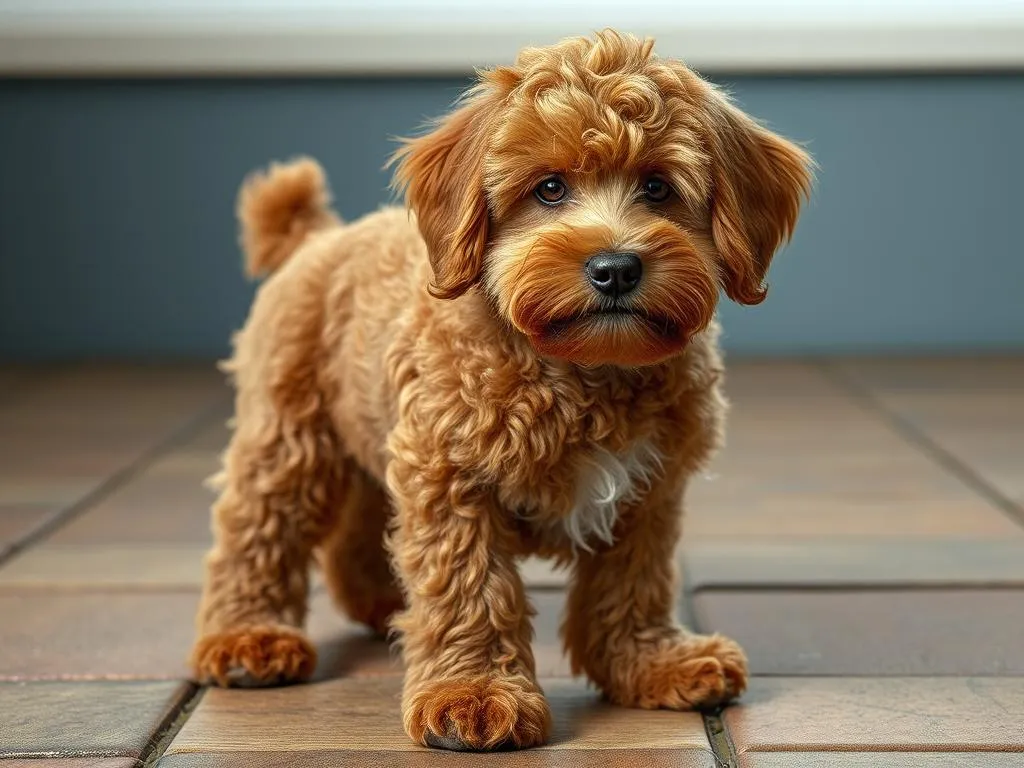
Introduction
Dog breeds play a significant role in pet ownership, influencing everything from a dog’s size and appearance to its temperament and behavior. Among the many breeds available, the Cavapoo has gained particular attention and popularity among dog owners. This adorable designer breed is a cross between the Cavalier King Charles Spaniel and the Poodle, combining the charming traits of both parent breeds.
In this article, we will explore the size and characteristics of the Cavapoo, aiming to answer one of the most common questions: how big does a Cavapoo get? Understanding the size and overall traits of this breed will help potential owners make informed decisions about whether a Cavapoo is the right fit for their lifestyle.
Understanding Dog Breeds
Definition of Dog Breeds
A dog breed is a specific group of domestic dogs that share certain characteristics, such as physical traits, behavior, and genetic lineage. These breed characteristics are important because they help prospective owners match their lifestyle and preferences with the right dog. Different breeds have varying needs, temperaments, and sizes, making it crucial to understand these differences before bringing a dog into your home.
Overview of Designer Breeds
Designer breeds, also known as hybrid breeds, are created by intentionally crossing two different purebred dogs. This trend has gained traction among dog lovers who seek unique traits that may not be present in purebred dogs. The intention behind creating designer breeds like the Cavapoo often includes achieving a combination of desirable characteristics, such as hypoallergenic coats, temperaments, and sizes.
The Cavapoo: Breed Characteristics
Origins of the Cavapoo
The Cavapoo is a relatively new designer breed that emerged in the late 1990s. By crossing the affectionate Cavalier King Charles Spaniel with the intelligent Poodle, breeders aimed to create a dog that embodies the best traits of both breeds. The Cavapoo was designed to be a loving companion, suitable for families and individuals alike.
Physical Characteristics
One of the standout features of a Cavapoo is its size. So, how big does a Cavapoo get? The answer varies based on the type of Poodle used in the breeding process. Cavapoos can be bred from two types of Poodles: the Toy Poodle or the Miniature Poodle.
- Size and Weight: On average, a Cavapoo weighs between 5 to 20 pounds, making it a small to medium-sized dog.
- Height: Typically, they stand between 9 to 14 inches tall at the shoulder.
- Coat Types: Cavapoos have a range of coat types, including wavy, curly, and straight. Their coats can also vary in length and thickness.
- Color Variations: Cavapoos come in various colors, including but not limited to cream, apricot, black, and chocolate.
Temperament and Behavior
The Cavapoo is known for its friendly and affectionate temperament. They are social dogs that thrive on companionship, making them excellent family pets.
- Socialization Tendencies: Cavapoos are generally good with children and other pets, making them a popular choice for families.
- Energy Levels: While they have moderate energy levels, Cavapoos enjoy playtime and daily walks. They require regular exercise to keep them healthy and happy.
How Big Does a Cavapoo Get?
Size Variations
As mentioned earlier, the size of a Cavapoo can vary significantly based on the size of the Poodle parent. Here’s a breakdown of the potential sizes:
- Toy Cavapoo: If the Poodle parent is a Toy Poodle, the Cavapoo will likely be on the smaller side, weighing between 5 to 10 pounds and standing around 9 to 12 inches tall.
- Miniature Cavapoo: If bred from a Miniature Poodle, expect a larger Cavapoo weighing between 10 to 20 pounds and standing about 12 to 14 inches tall.
Factors Influencing Size
Several factors influence the size of a Cavapoo, including:
- Genetic Factors: The genetic makeup inherited from both parent breeds plays a crucial role in determining size.
- Environmental Influences: Nutrition and overall care during the growth stages can impact a Cavapoo’s final size.
- Breeding Practices: Responsible breeding practices can help ensure that puppies are healthy and grow to their expected size.
Growth Stages
Understanding the growth stages of a Cavapoo can help potential owners set realistic expectations for their pet. Here’s a brief overview:
- Puppy Stage: From birth to about 6 months, Cavapoos are in their puppy stage, experiencing rapid growth. They may weigh between 2 to 10 pounds during this time.
- Adolescent Stage: Between 6 months and 1 year, growth slows down, but they continue to gain weight and height.
- Adult Stage: By around 1 year, most Cavapoos reach their adult size, typically weighing between 10 to 20 pounds.
Caring for a Cavapoo
Nutrition
Proper nutrition is essential for a Cavapoo’s growth and overall health.
- Recommended Diet: A balanced diet that includes high-quality dog food, rich in protein and nutrients, is vital. Owners should consult with their veterinarian to determine the best feeding plan.
- Feeding Guidelines: It’s generally recommended to feed Cavapoos twice a day to maintain energy levels and prevent obesity.
Exercise Requirements
Cavapoos are active dogs that require regular exercise to stay fit and healthy.
- Daily Exercise Needs: Aim for at least 30 minutes of exercise daily, which can include walks, playtime, or agility activities.
- Suggested Activities: Activities like fetch, tug-of-war, and scheduled playdates with other dogs can help meet their exercise needs.
Grooming Needs
Cavapoos have unique grooming requirements due to their varied coat types.
- Grooming Frequency: Regular grooming is essential to prevent matting and keep their coats healthy. A visit to a professional groomer every 6 to 8 weeks is recommended.
- Techniques: Daily brushing can help minimize shedding and maintain a clean coat.
Health Considerations
Common Health Issues
While Cavapoos are generally healthy, they can be prone to certain health issues inherited from their parent breeds, such as:
- Hip Dysplasia: A common issue in many breeds, affecting mobility.
- Ear Infections: Due to their floppy ears, they can be susceptible to infections.
- Eye Conditions: Conditions like cataracts and progressive retinal atrophy can occur.
Regular Veterinary Care
Routine veterinary care is crucial for maintaining a Cavapoo’s health.
- Routine Check-ups: Regular vet visits can help with early detection of health issues.
- Vaccinations: Keeping up with vaccinations is essential for preventing diseases.
Conclusion
In summary, the Cavapoo is a charming and affectionate breed that appeals to many dog lovers. Their size can vary significantly, typically ranging from 5 to 20 pounds and standing between 9 to 14 inches tall, depending on whether they are bred from a Toy or Miniature Poodle.
With their friendly temperament, moderate exercise needs, and unique grooming requirements, Cavapoos can make wonderful companions for families and individuals alike. Responsible ownership and breeding practices are essential to ensuring the health and happiness of these delightful dogs.
Frequently Asked Questions (FAQs)
What is the average lifespan of a Cavapoo?
The average lifespan of a Cavapoo is typically around 12 to 15 years, depending on their health and care.
How do Cavapoos interact with children and other pets?
Cavapoos are known for their friendly demeanor and generally get along well with children and other pets, making them suitable for family environments.
Are Cavapoos hypoallergenic?
While no dog is entirely hypoallergenic, Cavapoos tend to produce less dander and may be suitable for allergy sufferers.
How much training do Cavapoos require?
Cavapoos are intelligent and eager to please, so they respond well to training. Consistent training sessions and socialization are important from a young age.
Where can I adopt a Cavapoo?
Cavapoos can often be found in rescue organizations, shelters, or through reputable breeders committed to responsible breeding practices.
By understanding the characteristics and care needs of the Cavapoo, potential owners can make an informed decision about welcoming this delightful breed into their lives.









